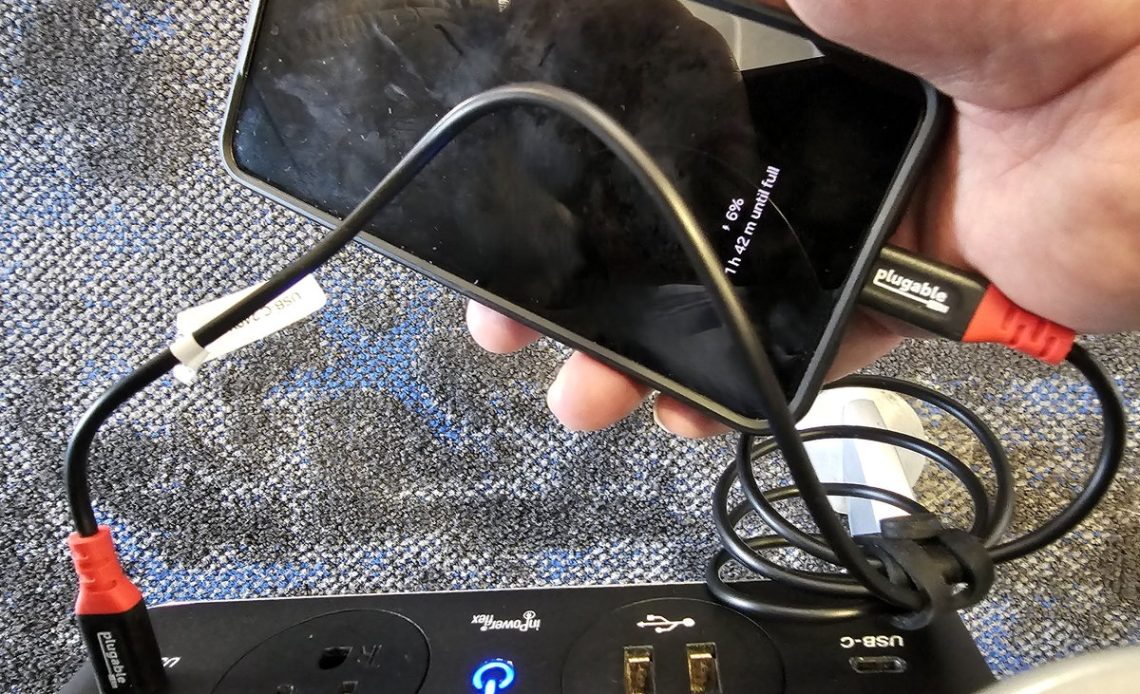
The odds say you won’t actually need your seatbelt today. The odds say that your phone won’t be hacked by a random USB-C wall charger, either. But, like a seatbelt, here’s why it’s worth investing in this cheap, easy protection device.
If you go on vacation or a business trip, chances are you’re going to need a data cable for your phone anyway, and an extra can’t hurt. But a power-only cable is a handy way of securing your phone no matter what out-of-the-way, dodgy hotel or airport you end up in.
Some people call these “USB condoms,” usually referring to a dongle that you can buy that blocks data from being transferred over the USB connection. In this case, “data” equals malware. Is a foreign government or hacker group building in standalone devices to push malware to your phone? Do credit-card skimmers exist? Okay then. If a malicious cable can be used to conceal malware, the wall port sure can.
I recently returned from a pair of trips to Arizona and Hawaii, and had planned to invest in a data-only USB-C cable anyway. As it turned out, Plugable alerted me about its entrance into the market, and asked if I’d like to try one out. The company offers a few cables of different lengths, and I think that Plugable’s $15.95 6-foot-cable works best, if only because it accommodates awkwardly placed outlets in airports, airplanes, and hotels. (There are also cheaper, shorter options.)
Basically, you’re investing in a data cable that you know can be plugged into about anything. And no, you probably don’t need a wired data connection in this case, as Wi-Fi and cellular data can be used for anything that you need to download.
Plugable identifies its cables with a special red highlight so that you can distinguish it from other cables in your bag. As far as I can tell, it worked just fine, charging my phone on the road during some downtime and saving me from bringing another wall-wart charger. And since the cable handles power up to 240 watts, I could charge my phone, my tablet, and a laptop depending on which one needed some juice.
Admittedly, there was just one hitch. Virtually every phone on the planet uses USB-C for charging, now. But the chargers themselves were built years ago. In the airports in San Francisco (SFO), Kahului (Maui/OGG), and the Hyatt and Sheraton hotels I stayed at, every charger was USB-A, not USB-C. The exception? Sky Harbor Airport in Phoenix, which included both USB-C and USB-A connections.
So did I bring the wrong cables? Maybe. Fortunately, USB-A to USB-C data-blocking cables exist, and PortaPow is a trusted name in that regard. PortaPow’s 3-foot cable is just $6.99, though the company doesn’t state how much power it can handle.
In any event, a small data-blocker cable or “cable condom” is cheap, small, secure, inexpensive, and fits easily into a bag or purse — and that red accent certainly helps it to be found when you’re fumbling with a bag in the overhead bin. It’s just a good thing to have on a trip, just in case.
Author: Mark Hachman
Source: PCWorld
Reviewed By: Editorial Team



